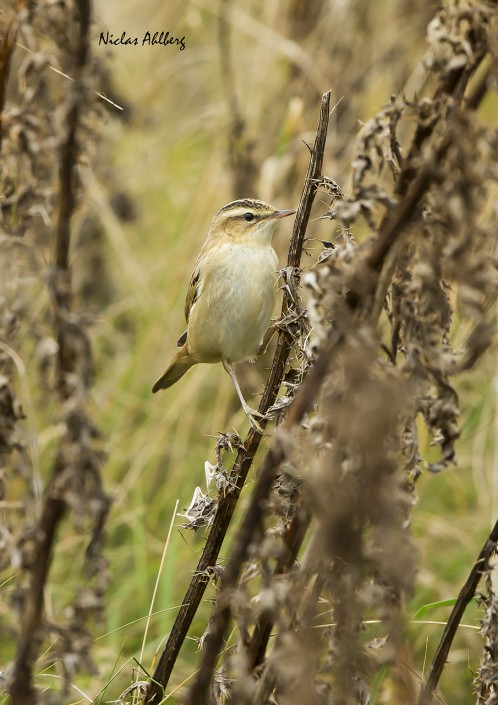This post is also available in: Swedish
Sedge warbler – Acrocephalus schoenobaenus
Sedge warbler – Acrocephalus schoenobaenus
is an Old World warbler in the genus Acrocephalus. It is a medium-sized warbler with a brown, streaked back and wings and a distinct pale supercilium. Sedge warblers are migratory, crossing the Sahara to get from their European and Asian breeding grounds to spend winter in Africa. The male’s song is composed of random chattering phrases and can include mimicry of other species. The sedge warbler is mostly insectivorous. This is a medium-sized warbler, 11.5-13 cm long and weighing around 12 g. It has a streaked brown back and wings, and pale underparts. The rump is warm brown and unstreaked, contrasting with the duller wings. The forehead is flattened, there is a prominent whitish supercilium, the crown is streaked with black, and the bill is strong and pointed. The legs are greyish. The sedge warbler has a large range and an estimated Global Extent of Occurrence of 10 million square kilometres, with a large global population including between 8.8 million and 15 million birds in Europe. Data analysis by the British Trust for Ornithology has shown that fluctuations in the sedge warbler population stem from the adult survival rate, due to changes in rainfall on the birds’ wintering grounds. Global changes in population have not been measured, but the sedge warbler’s status is designated ‘of least concern’ by BirdLife International.
It breeds across Europe and western and central Asia and is migratory. After feeding up post-breeding, they migrate quickly across southern Europe and the Sahara from August to September. Studies in Nigeria and Uganda suggest that sedge warblers return to spend winter at the same sites, year after year. The song is varied, rushed and chattering, with sweeter phrases and some mimicry, typical of the Acrocephalus warblers. It is composed of phrases in random order, so that it is never the same. Male sedge warblers which have the widest repertoire mate with the largest number of females.
It sounds like this
Recordyng by Jerome Simal from Xeno canto














